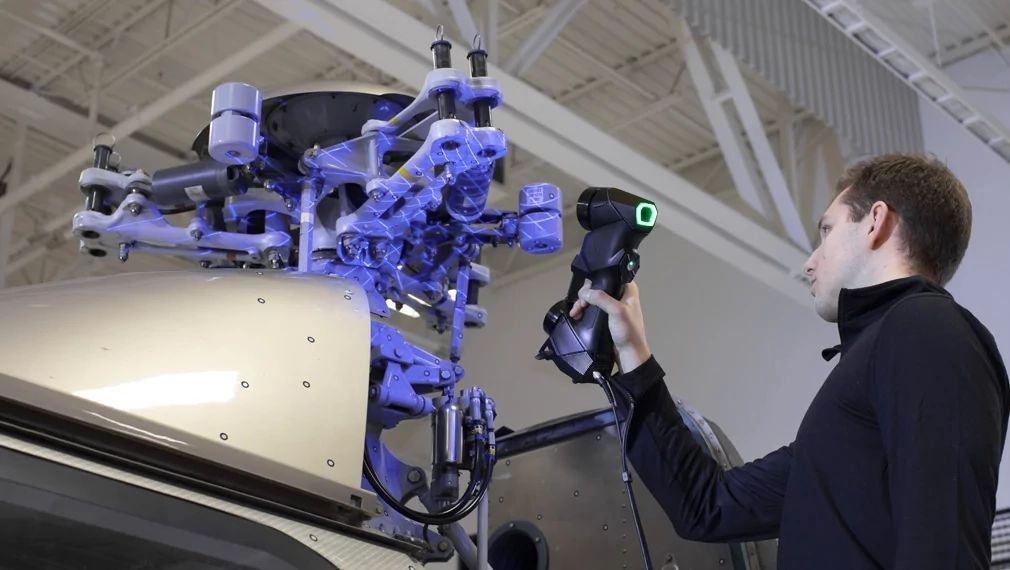November 11, 2024
Mining engineering firm opens new service segment thanks to 3D scanners See the articleA training center at the cutting edge of progress
The aeronautics industry is without question a dynamic sector of activity where progress takes place at breakneck pace and where the players in the field have to deal with remarkable technological advances that follow each other at increasingly shorter intervals. This industry would therefore very likely find itself lagging behind considerably without the support of continually updated training programs and lecturers who keep a close eye on market developments.
And this is exactly what happens at the POLYAÉRO® Hautes-Alpes Center of Excellence, which is managed by FORMASUP MÉDITERRANÉE and where a research laboratory is used to ensure that new technologies and the latest aeronautical practices are included in the learners’ educational and technological pathway.
Harnessing virtual reality (VR) and augmented reality (AR) tools, this immersive laboratory makes it possible for students to examine and handle aeronautical parts and even entire aircraft interactively. However, making digital twins and 3D models available in VR requires reliable scan data to be collected using devices of proven metrological quality, and then post-processed in an intuitive and user-friendly software ecosystem.
In the wake of these numerous improvements, POLYAÉRO® Center of Excellence thus found itself in need of reliable means for digitizing parts and models that could be moving or static, large or small.
Versatile equipment, lasting results
One of the aircraft that was scanned for 3D imaging at POLYAÉRO® is a PC-6 Porter, a paratrooper transport aircraft. With a length of eleven meters and a wingspan of sixteen meters, this aircraft from Swiss aircraft manufacturer PILATUS Aircraft presented specific challenges that this scanner was able to handle thanks to its shape, size and mobility.
The industrial project carried out by the students required studying the conversion of a thermal-powered aircraft into an electric aircraft. This involved creating a digital twin of the entire PC-6 Porter.
It is important to note that before POLYAÉRO® acquired Creaform’s solutions, scanning was done using a measuring arm equipped with a scanner head, which made data acquisition more complex. In fact, unlike the various CREAFORM scanners, this solution was not suitable to meet their need for flexibility.
Scanning
The scanning device that was chosen had to meet the following indispensable conditions:
- Ergonomic
- Compatible with the digitization of moving and very large objects and parts.
This led POLYAÉRO® to choose Creaform scanners and photogrammetry systems:
- The MetraSCAN 3D for scanning the exterior of the aircraft
- The Go!SCAN 3D and the HandySCAN 3D|SILVER for the interior
- The MaxSHOT 3D for creating a common marker inside and outside the aircraft
The scan data was collected within a very short time and then served as the basis for the rest of the project, including retrofitting the aircraft with an electric motor and batteries, all in 3DEXPERIENCE (formerly CATIA V5, from the software publisher Dassault Systèmes).
Animated in VR in an appropriate setting, the aircraft’s digital twin was given various modifications which, once validated, were adapted in augmented reality.
A simple but powerful software platform
Reverse engineering
After a 3D scan of the aircraft was rendered in real time using Creaform’s various measurement solutions, reverse engineering could start. The geometries thus captured were processed in Creaform’s software module VXmodel by a group of students in training. The reverse engineered components were then reconstructed using 3DEXPERIENCE software.
With its intuitive interface, ease of use and fast processing times, the VXelements platform has become an essential tool for setting up a library of 3D models that are derived from scans or formed through reverse engineering. This constantly evolving database fuels the technological projects as well as the digital libraries of the immersive VR and AR laboratory.
The POLYAÉRO® Hautes Alpes Center of Excellence is at the forefront of educational innovation, offering its students all the hardware and software resources they need to build solid skills for the professions of the future in the aeronautical industry.
“The ease with which we can use Creaform’s 3D scanners makes it easier for us to train our students in reverse engineering. Direct meshing is a distinct advantage in post-processing, as is the ability to scan an aircraft in the same repository using several scanners simultaneously,” sums up Killian Marandel, operational manager at POLYAÉRO®.
The future of the industry and training
At the POLYAERO® Hautes Alpes Center of Excellence, students choose their own technological projects and use 3D scanners to study discrepancies between design and production, deformations and reverse engineered models.
The team of design engineers and lecturers need a large number of 3D models of parts in order to enrich the library and integrate them into virtual or augmented reality teaching materials.
To do this, the center scans parts of all sizes and aircrafts to complete existing models or create new ones. It is thanks to this updating of databases and knowledge that POLYAÉRO® and the industry in general is evolving rapidly and almost organically. Creaform is thrilled to be part of this adventure.


















